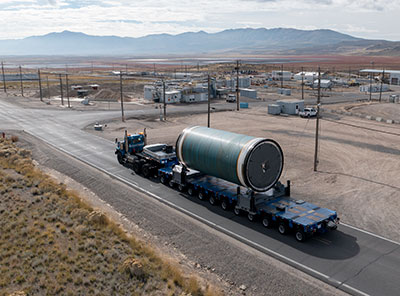 Space News space history and artifacts articles Messages space history discussion forums Sightings worldwide astronaut appearances Resources selected space history documents |
If you have previously registered, but forgotten your password, click here.
The test was conducted by Orbital ATK of Promontory, Utah, which made the solid rocket boosters flown on the space shuttle and will provide the boosters for the first flights of SLS. During the test, the case failed within 1 percent of pretest estimates, validating the models for strength of the composites. One-hundred-twelve channels of instrumentation provided data on the case failure. The rocket motor case test is part of an effort to optimize a composite case design that may be stronger, lighter, yet more affordable than traditional steel cases. In turn, this would provide increased payload performance due to reduced weight inherent in composite materials. After the initial flights of SLS, the rocket will be upgraded from a configuration capable of delivering 70 metric tons (77 tons) to low-Earth orbit to an evolved configuration that will launch 130 metric tons (143 tons). To reach its full capability, SLS will use more powerful boosters. NASA is preparing today for that evolution by working with industry partners to test technologies that could be used to develop new liquid or solid rocket boosters. | ||||||||
| Robert Pearlman | Northrop Grumman photo release Northrop Grumman Completes First BOLE Solid Rocket Motor Segment for NASA's Space Launch System | |||||||

